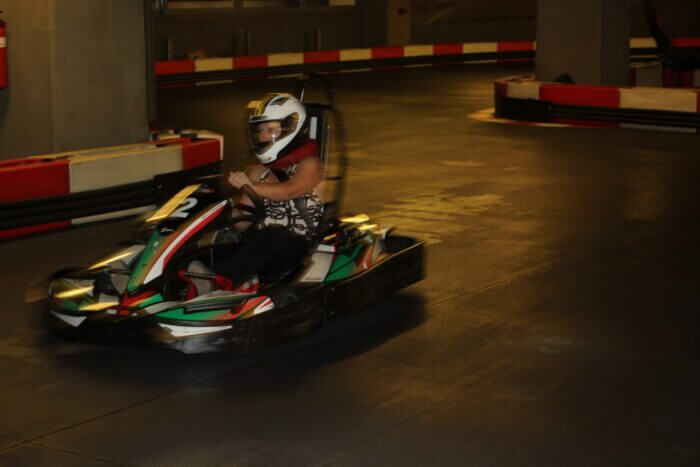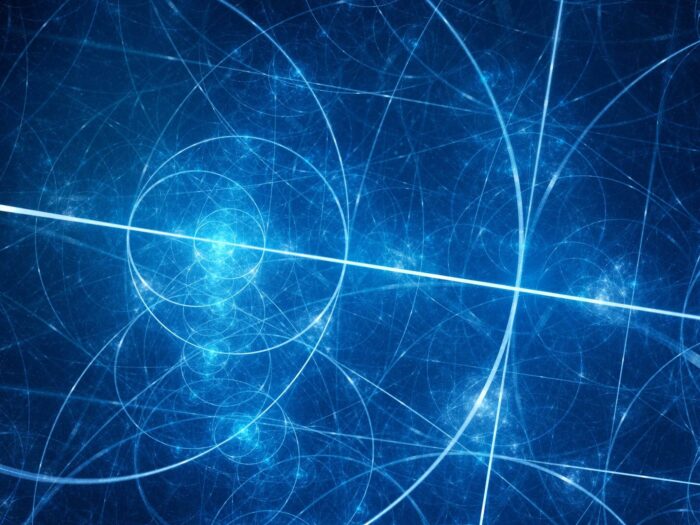
Race for the Human Mind
What is this blog post about?
The main question we will answer is when AI will reach the human level of intelligence or above that. Let’s see how deep we can go.
Let’s answer that:
Straight to the question
To prove the statement I will make in a minute we need to answer the most interesting and fundamental question for me: What is consciousness, where, when and how it arises?
Back to the question.
When will AI be able to reach the human level of intelligence or above?
My answer is Never and this time I’m not alone.
Who is Stuart Hameroff ?
Stuart Hameroff (born July 16, 1947) is an American anesthesiologist and professor at the University of Arizona known for his studies of consciousness and his controversial contention that consciousness originates from quantum states in neural microtubules. He is the lead organizer of the Science of Consciousness conference.
Hameroff statement:
Hameroff statement is that consciousness is not a product of computation in our neuron nets and it is not computational at all.
He is an anesthesiologist and he claims that full anesthesia affects the consciousness while the brain is still functional. To see where the anesthesia impacts, one needs to dig into the neuron itself.
While examining the neuron, he discovered a whole new world. He found out that the structures and organization in the neuron are far more complex themselves than all the neuron networks in the brain.
In the neuron, he found structures, proteins called microtubules, and he claims that awareness arises in these structures and it is a quantum event. You can see a lot of lectures about cytoskeleton and microtubules and they are quite interesting – I strongly recommend you do so.
Some scientist pointed out that quantum events are extremely unstable, they exist in very coherent environment (no interference) and on temperatures close to absolute zero, so how is possible something warm and wet and noisy like our brain to support quantum events.
Hameroff pointed out that quantum events are observed in nature many times, for example, the plants photosynthesis is a quantum process, birds’ migration too, so he says, if plants can do it why can’t we?
Then he found structures in our cytoskeleton and in microtubules that create an environment that not only supports quantum events, but they also can last much longer than anyone could imagine, sometimes for hours and days. Also, the microtubules are filled with liquid, a special kind of water, which supports a special kind of oscillations, which help that process and the transfer of the quantum signals … the explanation is really complex but this is enough for now.
To put it simply, it seems like nature designed us to be “quantum friendly” and not just us but almost any living organism on the planet.
In the AI world there is a belief that when we reach the computational power of our brain, we will be able to create intelligence. Based on the number of neurons and the frequency in our brain, it is calculated that this number is 10 with 14 zeros operations per second.
Hameroff says NO to that, because no one considers the neuron itself and its computational power. If we consider this, the number is 10 with 27 zeroes operations per second. This statement made him “persona non grata” in the AI world.
But that’s not all – Hameroff claims that consciousness is not computational at all!
In a study he has on Alzheimer’s, he noticed that microtubules are very disordered in this disease and in fact that leads to the lack of memory and consciousness. His experiments show that ultrasound with 2MHz actually restores the order and this could be very promising in the fight with Alzheimer’s.
Back to the main point:
He is confident that we cannot ever reach human-like intelligence with a computer because awareness is not computational. He says that brain activity is more similar to music than to computation.
But he didn’t have a mathematical proof of that, and he also didn’t have the answer to what consciousness is then.
Then he read a book “Emperors of New Mind” by Rodger Penrose and that lead Hameroff to meet Penrose and they both created the most amazing theory about our consciousness I’ve ever seen and also the book: “Shadows of the Mind” by Penrose
Who is Roger Penrose?
(born 8 August 1931) is an English mathematical physicist, mathematician, philosopher of science and Nobel Laureate in Physics. He is Emeritus Rouse Ball Professor of Mathematics at the University of Oxford, an emeritus fellow of Wadham College, Oxford and an honorary fellow of St John’s College, Cambridge, and of University College London (UCL)
Penrose has made contributions to the mathematical physics of general relativity and cosmology. He has received several prizes and awards, including the 1988 Wolf Prize in Physics, which he shared with Stephen Hawking for the Penrose–Hawking singularity theorems, and one half of the 2020 Nobel Prize in Physics “for the discovery that black hole formation is a robust prediction of the general theory of relativity”.
Not only is Penrose Nobel prize laureate twice, but he is also considered as the person who knows and understands the universe geometry and organization the most.
Penrose statement:
Penrose states that consciousness is non-computational and never will be.
Kurt Friedrich Gödel is a mathematician, one of the greatest minds ever born.
Penrose steps on Gödel’s theorem to prove his statement.
An aspect of the theorem says that a computation system can be either complete or correct but never both.
The idea is that there are computations that never end, and Penrose proves that no computational system, no matter how complex, can calculate with certainty that computation that never ends actually never ends.
In other words, no computational system can see beyond its own computational rules.
But we can and we do it all the time.
A computation that never ends is also known as paradox and we see and realize paradoxes all the time.
Penrose says that if there is a paradox in our computational system, we need to extend the system with a new rule in order to solve it. However, this new rule comes from our awareness of this paradox and not from the system itself. Thus, this rule will sooner or later lead to another paradox which the system will not be able to solve and we should solve it by adding another rule and so on.
No computational system can ever “realize” the rules that sustain it, it only applies these rules. It will never be aware of them.
But we do – we are inventing them all the time, therefore our consciousness is not a product of our computational system (our neuron network).
If you do not believe me, do what I did and read “Shadows of the Mind” by Penrose, where the full mathematical proof of this statement is and believe it or not the proof is indisputable.
Let’s simplify this with an example of a paradox. Let’s imagine a list of paper with a sentence that says: “The sentence on the opposite side of the paper is correct”. And on the opposite side, another sentence says “The sentence on the opposite side of the paper is wrong”.
Think about this situation for a moment …
No matter how many times we turn the paper, we sooner or later will get to the conclusion that this is a paradox … there is no solution.
Whether the statement on side A is correct and the statement on side B is wrong or
Whether the statement on side B is correct and the statement on side A is wrong or
Both are correct or
Both are wrong … we still do not have a solution, this is a process that never ends.
But we somehow solve it!
How is it even possible for us to solve it, how do we have the awareness for this paradox if our consciousness is a product of computational procedures that never end, procedures that lead to paradox, how does the computation “see” beyond its own process that never ends?
Penrose says: it is not possible, that’s why awareness is non-computational and again if you want to see the complete proof of that statement … read the book.
Penrose is confident that consciousness is not computational and cannot be simulated or recreated by any computational system, no matter how complex the system, be up-down (algorithms), down-up (self-educated systems – machine learning), genetic (systems where the program decides which algorithms are weak and deletes them and which are strong and develops them) or any combination of these, or a combination of whatever else.
He also insists that consciousness is indeed extraordinary but not supernatural!
He claims that consciousness might not be computational, but we still can explain it by the laws of physic, we just might need “new” physic.
The very first step is to stop living in two separate worlds: the world of Newton where everything is big and predictable and the mysterious world of quantum physics where everything is very small and a particle could be in multiple places at the same time.
And we still didn’t answer the question – what consciousness is then and what produces it, let’s do that next.
Welcome to the quantum world:
Straight to the answer:
Consciousness arises on a quantum event called collapse of the wave function.
Let’s clarify this:
Quantum word is indeed mysterious and strange but let’s be crystal clear: the laws in the quantum world are as well-proven as the laws in the material world we experience.
The thing is that the laws in the quantum world appear not to be fully applicable to big objects in the “real” world and the laws in the real world are not fully applicable in the quantum world.
What is a superposition?
In the quantum world, a particle could be at multiple places or in multiple states at the same time. That is called superposition and that’s not all … all positions are “quantum split”.
Let’s imagine that we have a particle in superposition in 2 places. When the particle in position A interacts with the other particles around, it is affected by them and also split by them, but what is amazing is that the superposition of the same particle in position B is affected immediately by this interaction … there is no information transfer, no delay, all this happens immediately, even if these 2 superpositions are at millions of miles of distance. They act as if they are the same particle, which they actually are. This is the quantum splitting event
To be clear: this is not a hypothesis, this is as true as that the moon and the sun exist!
The process when a particle stops being in superposition and “picks” one of all superpositions and selects to be in one of all the places and states is called a collapse of the wave function. This is basically the process when the balance and the harmony in the universe are restored in this particular episode.
But why can’t I see this in a real life? If I see a cat on a street, why don’t I see or at least feel the superposition of the cat on the other side of the street? It is true that some “substances” can cause such experiences and they are very similar in structure to the anesthesia that we already know affects our perception of consciousness, but let’s be serious and get back to the physics 😊
There are 2 very popular hypotheses for that:
Hypothesis 1: There are parallel universes and all superpositions live in separate ones. This means that a projection of me lives with the cat from the opposite side of the street and I from this side know nothing about this and life with a cat from my side.
Hypothesis 2: Our mind triggers the collapse of the wave function which means that we literally materialize the world we live in. So, our mind will always “force” one of all possible superpositions and that’s why we always see only one.
Penrose says NO to both and proposes a 3rd option:
Penrose suggests that the superpositions happen in our world too, but they last a very short time and we cannot see them!
He suggested that the time for the collapse of the wave function is inversely proportional to the gravity energy needed to support the superposition. The bigger the objects are, the more the gravity energy they need to keep their superpositions, the shorter the time the superposition lasts is.
That’s why for big objects superposition lasts much less than a second and for neutron for example can last millions of years. For micron superposition last 1/12 of second, for a mouse few nanoseconds and so on.
It is important to mention that gravity is a unique force in the universe, only gravity for example can change the direction of the light. This phenomenon is known as “Einstein quantum tilt”.
For more details you can read Penrose book “Shadows of the Mind” and the book is amazing, even though it is not the easiest thing to read.
Penrose suggested that the collapse of the wave function event is “captured” by our microtubule structures, this quantum event is stable because of the unique structure of our microtubules and cytoskeletons, they support quantum coherence and transfer these quantum states between neurons in big sections of our brain. This awareness actually “suggests” to our neuron net what computation to do. Also, the quantum process in the microtubules creates synapses connection which means that our thoughts which are a projection of this awareness literally modify our computational system and maybe more.
We can say with a big level of certainty that we communicate with the universe on a quantum level and this communication provokes awareness, remember: the universe is not only the stars and the planets and some abstract objects, we are also part of it, animals and plants too.
For sure there are still big unknowns but this sounds promising, there is no doubt that we are “quantum friendly” and this seems to be the purpose of the evolution process, there is no doubt that consciousness is not computational, no doubt that quantum events exist and collapse, no doubt that this is part of the logic and geometry of the universe itself. The rest is the hypothesis of two great scientists which I naturally feel to be true.
The Hameroff and Penrose are confident that consciousness is not computational and never will be, they think that it is a product of the universe itself and arises in our cytoskeleton and microtubule structures, structures that can support quantum events, and we will know more about this in the near future. These structures are seen in almost all living systems, animals and plants, besides few organisms like bacteria and viruses. This doesn’t mean that all these living systems have consciousness, it means that they have a direct connection with the universe on a quantum level.
I support this statement, not because I have mathematical or physical proof, but because I feel it is right and even if I’m wrong in my belief, I still have “awareness” about this is an option.
Conclusion:
The main reason for the statement that AI will never reach our level of intelligence is that consciousness is not computational and awareness is not a product of calculations no matter how complex the computational system might be.
In addition, I have my own reason:
Now we use only 15% of our intelligence, 20-22% in very rare cases. In the case where we do not know much about what we are capable of, how is it even possible to create equivalent intelligence of something we do not fully understand. Isn’t it way more interesting and helpful to work in direction of unlocking all this potential? If we do so, we might realize that we do not need anything artificial at all.
While building a “thinking” machine, we are basically trying to create a process that creates our own perspective, from our perspective. How ridiculous is that? This is another paradox, don’t you think?
And even if we discover this process, we still need to discover the process that creates it, then we need to find the next process and so on. The deeper we go, the more we realize that we do not need a computer to tell us all this and no matter our initial logic was wrong, our awareness lead us to the correct answer.
Let’s remember that the Pythagorean theorem is not true because he said so, it was always true.
Whatever we find out or create, it already existed, we just don’t know that yet.
To conclude the conclusion:
Awareness is not computational.
Consciousness is not only ours, it is the product of harmony and balance the universe constantly produces, it is the product of its geometry, laws and knowledge of which we are part. So in theory we have access to everything, unlimited.
Our thoughts are projections of that consciousness.
How close are our thoughts to pure consciousness depends on us, because our thoughts and the limitations of our mind are our free will?
Our thoughts made our life.
It is worth to think about all this for a moment… or two.
P. S.
Let’s say we hear the word “love” in a conversation.
Now let’s imagine we “hear” the same word in our thoughts. I bet you “feel” the difference.
The computational system can only “hear” love from outside, and before you say that you can program it to simulate this feeling … yes you can, that’s the whole point. You can. Computers are not responsible for what they are doing, we are.


